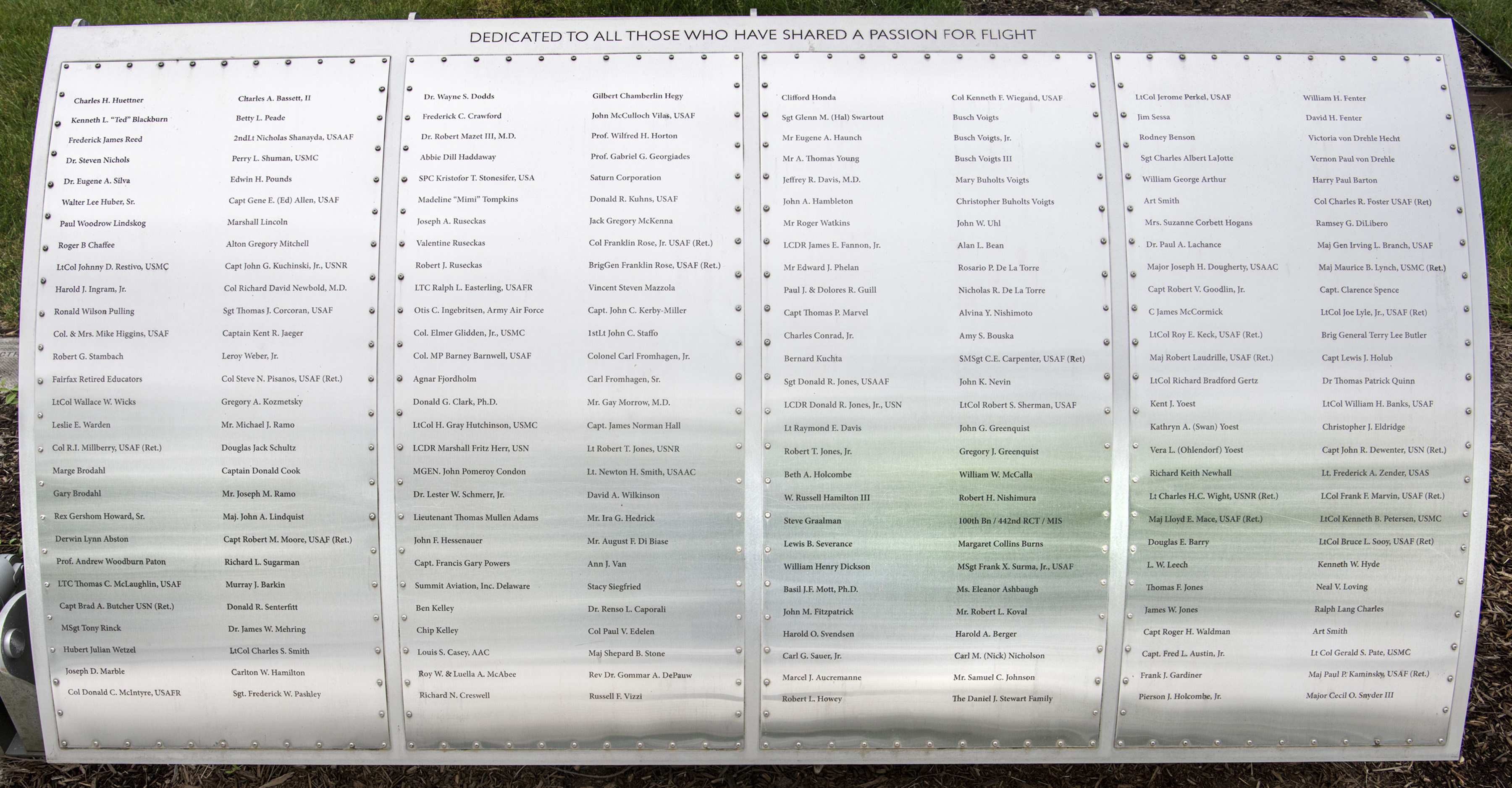
Foil: 24 Panel: 4 Column: 2 Line: 14
Wall of Honor Level: Air and Space Sponsor
Honored by:
Gary Quinn
During his career spanning over 50 years in the fields of electronics, communications and information systems, Dr. Quinn actively participated in many activities directly related to the development of US space systems. After 5 years in the Navy working on radars, communications systems and sonars, he attended Penn State University and joined the Ionosphere Research Laboratory in 1958.
During the early 1960s, he conducted research using rockets to study the ionosphere in order to develop better models to take into account effects on radio transmissions to and from satellites. Separating capsule space experiments were used to determine the electron density to height of several thousand kilometers. Some of the technology developed for those experiments, separation velocity for example, was later adapted by NASA for space experiments. The GPS satellites now use ionosphere models to correct for dilution of position accuracy.
He also played a lead role in studying the potential of satellites for defense communications leading to the application of satellites for tactical and strategic defense communications. He was responsible for oversight of communications, navigation and surveillance satellites when in the Office of the Assistant Secretary of the Navy for Research and Development during the late 1970’s. As Deputy Assistant Secretary of Defense for Command, Control, Communications and Intelligence during the 1980-95 time period, he was instrumental in restructuring the NAVSTAR GPS program to economize and keep the system alive in the face of severe budget reduction pressure. The Defense Satellite Communications System was implemented during that same period and as the US national representative to the NATO command and control community, he was responsible for integrating US satellite communications into NATO networks.
During the 1985-90 time period, he played a key role in the development of the first unique military communication satellite, MILSTAR, which stretched the state-of-the-art in space electronics systems. In addition to providing robust, secure, anti-jam communications for the military, the technologies developed for MILSTART benefited many commercial space applications as well as ground based systems.
In summary, Dr. Quinn’s contributions to our capabilities in space have been in both hands-on research and in the management and oversight of space system developments over a period of 40+ years.
Wall of Honor profiles are provided by the honoree or the donor who added their name to the Wall of Honor. The Museum cannot validate all facts contained in the profiles.
Foil: 24
